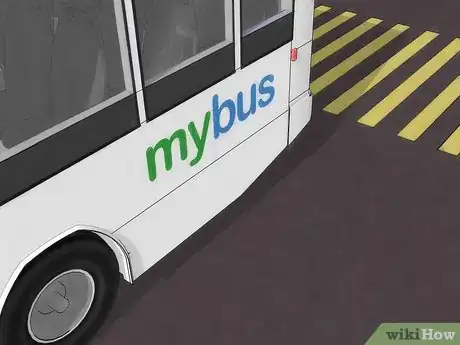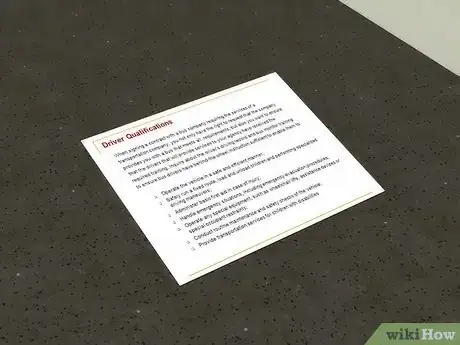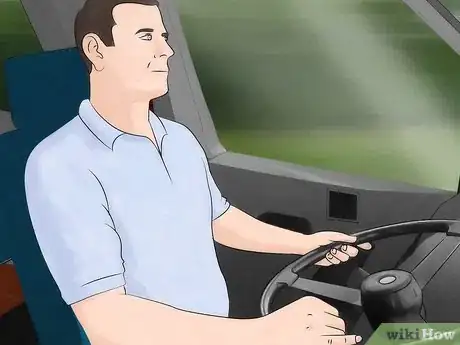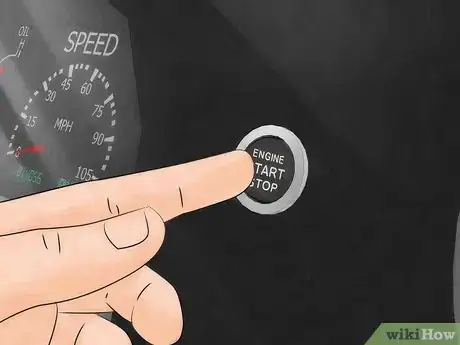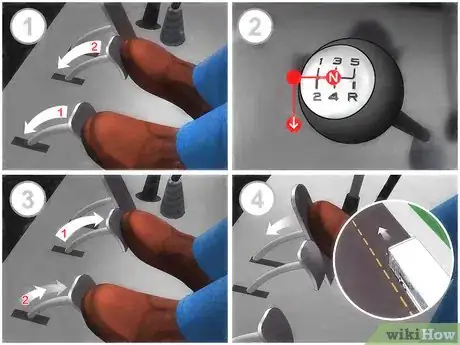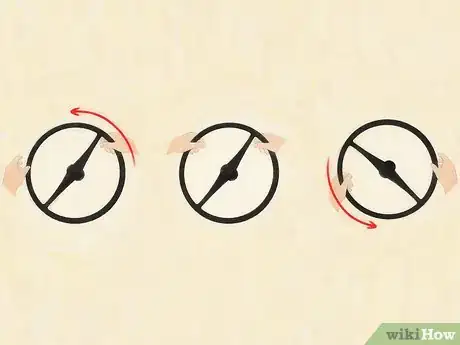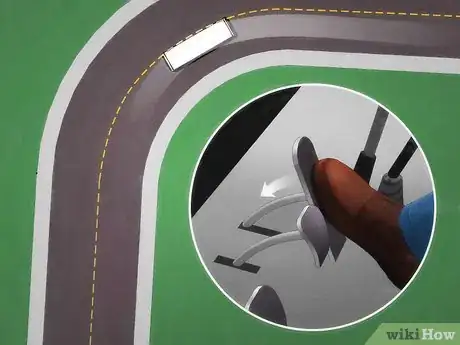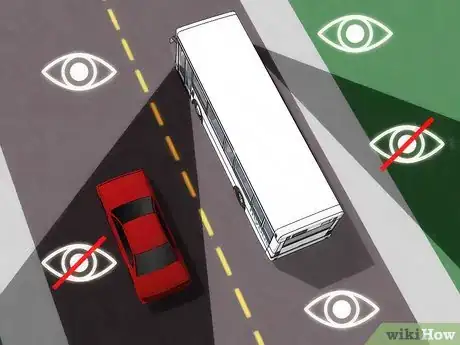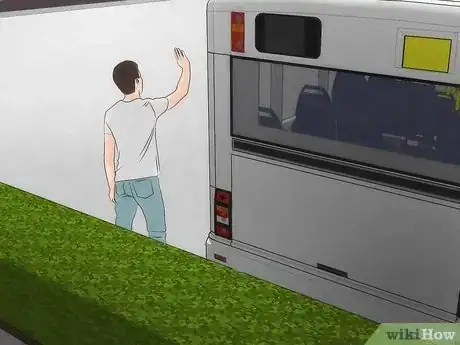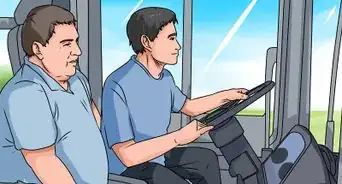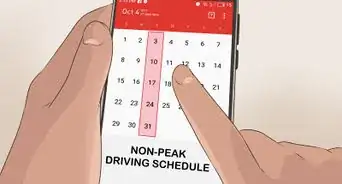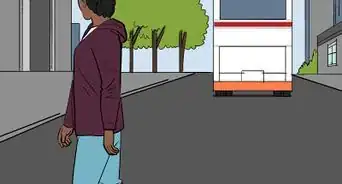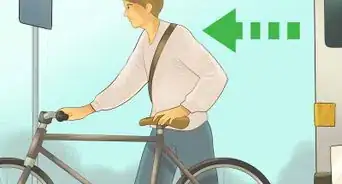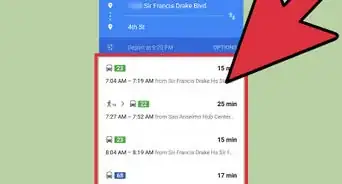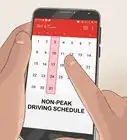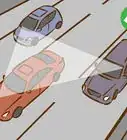This article was co-authored by wikiHow Staff. Our trained team of editors and researchers validate articles for accuracy and comprehensiveness. wikiHow's Content Management Team carefully monitors the work from our editorial staff to ensure that each article is backed by trusted research and meets our high quality standards.
There are 8 references cited in this article, which can be found at the bottom of the page.
wikiHow marks an article as reader-approved once it receives enough positive feedback. In this case, 81% of readers who voted found the article helpful, earning it our reader-approved status.
This article has been viewed 216,392 times.
Learn more...
Driving a bus is not that much more complicated than driving a car. You do have to be more careful, given the length and weight of a bus, as well as the responsibility you have to your passengers. However, the basics are the same, though you may need to learn to shift if you've never driven a standard before.
Steps
Obtaining a License to Drive a Bus
-
1Identify the company you want to drive with. Most companies train employees to drive. For instance, many cities offer a training course to teach their bus drivers how to drive. Decide what kind of company you want to go with, and see if they have a training program.[1]
- Your main options are a city bus driver, a long-distance bus driver, or a school bus driver.
- Decide based on what appeals to you most. For instance, you may not want to be a long-distance driver if you have a family to come home to. On the other hand, you may not want to be a school bus driver if you don't like kids much.
-
2Meet the qualifications. Most companies have basic qualifications you need to meet. For instance, you often need to be 21 to drive a bus. You'll also need to pass a background check and physical to drive. The physical is important because you'll be required to do some heavy lifting, such as pulling out ramps and lifting or tying down wheelchairs.[2] You'll also need to have a clean driving record and have been driving for at least 3 years.Advertisement
-
3
-
4Get the appropriate license. In most states, you must get a CDL license to drive a bus. Many states also require you to get a special endorsement on top of that if you're driving a school bus.[5] You may also need the passenger endorsement, no matter what type of bus you're driving.[6]
- You'll need to study your state's laws and pass a written exam to get this license. You'll also need to pass a driving test. Contact your local department of motor vehicles to find out what material you need to study and what tests you'll need to take. If you're getting your license through a company, they should assist you with this information.
- For these licenses, you may also need to meet certain criteria, such as passing a background check and physical exam, just as if you were training with a company.
- If you don't have a license, you can be fined or even put in jail for multiple offenses.[7]
- If you need a class C license for a small passenger bus, check out How to Get a Class C License.
Starting the Bus
-
1Adjust your seat, steering wheel, and mirrors. Just like in a car, you need to adjust your seat when you get in. This step is especially important when driving buses, as other people may be driving the same bus when you're not on shift. Also, adjust the steering wheel so you can comfortably control it.
- Adjusting the mirrors is also essential. Make sure that you can see the rear wheels in the outside ones, as well as the road behind it. On the inside mirror, you should be able to see the inside of the bus and the road behind the bus.
- The cross-view mirrors should help you see the front of the bus, what you can't see from your seat without mirrors.
-
2Start the engine. Put the parking brake on if it is not already set. Stomp on the clutch pedal if your bus is a standard rather than an automatic. Change gears to neutral before turning the ignition key.
-
3Push the starter. In most buses, you'll now need to push the starter button. However, with some engines, you'll need to wait about five minutes before you push the starter. For instance, if your engine is diesel and has an inlet heater or glow plugs, that means these parts need to warm up before the engine is started. There should be an indicator light that turns off when you can push the starter.
-
4Position your hands correctly. Like cars, you should position your hands in a particular way for the best grip on the steering wheel. On the bus, the recommendation is at 9 and 3, meaning that if you imagine the steering wheel as a clock, your hands will be where the 9 and the 3 are. Another way of looking at is your hands should be in the center on either side of the wheel.
Learning to Shift
-
1Identify the gears on your bus if it is a standard. If your bus is automatic, you don't need to worry about this method, but if it's a standard, you do. Start by establishing how many gear positions your bus has, usually four or five for driving forward, plus neutral and reverse.[8]
- You should be able to find a diagram on your bus. If you can't, find someone more experienced to tell you about the gears on the bus.
- Once someone shows you, you may want to make your own chart just in case you forget.
-
2Shift into motion. Start by pressing your left foot down on the clutch, which is the pedal to the left of the brake. Next, place your right foot on the brake, and shift into second gear, which will be your starting gear.[9]
- Next, undo the parking brake. Slowly lift your foot off the clutch until it reaches the friction point then stop. You'll know you've hit the friction point because the bus will start to move forward. Move your foot to the accelerator.
- As you start to accelerate, release the clutch with your left foot, pushing further down on the accelerator with your right foot.
-
3Shift to other gears. As you drive and need to go faster, you'll need to shift up. The process is similar to how you shifted to put the bus in motion. Once again, if you are driving an automatic, you can skip this step.
- Push the clutch in with your left foot. As you do, take your right foot off the accelerator.
- Shift up into the next gear.
- Next, take your foot off the clutch, and press down on the accelerator. You'll need to do this step a bit faster than when you started the bus moving.
- Use the same method to shift down.
Turning and Steering the Bus
-
1Pick the most comfortable turning method. Just like in a car, you can use one of two methods when turning the wheel. You either move hand over hand to turn the wheel or push with one hand and pull with the other without crossing over. Hand over hand can be a bit smoother, but if you're more comfortable with the push-pull method, it can be just as effective.[10]
-
2Brake before curves. If you try to slow down in the middle of a curve, it can be disastrous in a bus. You can cause the bus to skid, for instance. You may even lose control of the bus. Therefore, when approaching a curve, consider whether you will need to slow down, and do so before you hit the curve.[11]
-
3Hug the opposite edge of the lane. That is, you need to give yourself as much space as you can to make the curve. Because of that, you need to move to the edge of the lane, giving you more space.[12]
- For example, if the curve is going to the left, you'll be moving toward the right side of the lane.
- If the curve is going to the right, you'll be moving towards the left side of the lane.
-
4Accelerate out of curves. This move is just like a car. That is, as you reach the middle of the curve, it's time to start accelerating again. Move back up to speed as you end the curve.[13]
-
5Make a right turn. While left turns are generally pretty easy, right turns can be more difficult, given the length of the bus. Approach an intersection as you would in a car, getting in the correct lane and slowing down.
- Do not swing out into the lane to your left, as you could swing into a car. Hug that side of the lane only.
- If you must take extra space to make a turn, do so in the lanes that you're turning into. That is, as you turn right, you can swing out a little into the far lane next to your new lane if you need to, then return to the proper lane. Just be sure to watch for other vehicles and pedestrians.
Making Other Maneuvers
-
1Check for blind spots when changing lanes. As you enter traffic, it's important to not rely solely on your mirrors if you can. Of course, your blind spots are in slightly different places on a bus. Once you put on your turn signal, wait a few seconds before merging, to give other drivers a chance to honk if you don't see them.
- When you're merging left, your blind spot is near the back of the bus on the left side.
- Make sure you move your whole head and body to see around people to check out the back and sides and to see all you can in mirrors.
- Before merging, make sure you have 1 1/2 bus lengths between you and the next vehicle.
-
2Stop at train tracks in most states in school buses. Most states have a law about school buses and train tracks. In other words, you must stop, open the door, and look to see if anything is coming on the tracks. Usually, you must take this precaution even if you have no passengers on the bus.
- You'll need to turn on your hazard lights before breaking, as cars might not expect you to stop.
- Stop close enough to get a clear view, but try not to stop within 15 feet or so.
- Stay stopped if you see a train coming. Don't try to race the train. If you don't see a train, proceed across the tracks.
-
3Back up with assistance. Avoid backing up whenever possible, as it's always safest to go forward on a vehicle like a bus. However, when you must go backward, it's best to get someone to help you, if someone is around. Have them stand where you can see them, and then they can help guide you into place.
- Before backing up, honk your horn. Also, turn on your hazards and the audible signal that indicates you're backing up.
- Only back up in a straight line. Reverse the bus, and move back slowly until the person tells you to stop. If no one is around, use your mirrors to guide you.
-
4Stop the bus. Remember that a bus is very heavy. It can weigh as much as 9 tons with no one even on it. With a full bus, it can weigh as much as 15 tons. That means that it's going to take you much longer to stop in a bus than it would in a car.
- Downshift to 4th gear when you've slowed below 30.
- Press the clutch in as you are stopping. Slowly ease down on the break until you come to a complete stop.
-
5Park the bus. Find a suitable place to park. If you're pulling into a gas station, for instance, you should choose one built for trucks and buses, as some parking lots are not made for vehicles that large. Once you've found a place, put the bus in neutral.[14]
- Unless your bus is turned uphill, turn your wheels to the right. If your bus is facing uphill, your wheels should be facing left.
- Engage the parking brake, and turn the key to shut off the ignition. Always take the key out of the ignition.
Community Q&A
-
QuestionWhat happens when I encounter rough pavement? What will the steering wheel do?
 Community AnswerThe steering wheel might turn erratically and the bus might shimmy all over the road if you don't hold the steering wheel tightly while driving over rough pavement.
Community AnswerThe steering wheel might turn erratically and the bus might shimmy all over the road if you don't hold the steering wheel tightly while driving over rough pavement. -
QuestionAt which point does a bus need to shift gear when going downhill?
 Community AnswerAs you reach the hill, change down a gear to have more control going down the hill, too high a gear will make the bus go too fast and you may lose control.
Community AnswerAs you reach the hill, change down a gear to have more control going down the hill, too high a gear will make the bus go too fast and you may lose control. -
QuestionWhy do I need to start in second gear and not first?
 Community AnswerFirst gear, also known as load gear, can be used while going up hills. By starting in second gear, diesel consumption will be less.
Community AnswerFirst gear, also known as load gear, can be used while going up hills. By starting in second gear, diesel consumption will be less.
References
- ↑ http://thesource.metro.net/2012/01/23/how-do-they-do-that-learn-to-drive-a-bus/
- ↑ http://thesource.metro.net/2012/01/23/how-do-they-do-that-learn-to-drive-a-bus/
- ↑ http://thesource.metro.net/2012/01/23/how-do-they-do-that-learn-to-drive-a-bus/
- ↑ http://cdtschool.com/
- ↑ https://dmv.ny.gov/commercial-drivers/get-cdl-%E2%80%9Cs%E2%80%9D-endorsement-school-bus-drivers
- ↑ https://www.massrmv.com/rmv/license/21711.pdf
- ↑ http://delcode.delaware.gov/title21/c027/sc01/
- ↑ https://dps.mn.gov/divisions/msp/forms-reports/Documents/sb-driver-manual-070111.pdf
- ↑ https://dps.mn.gov/divisions/msp/forms-reports/Documents/sb-driver-manual-070111.pdf
- ↑ http://www.dot.state.pa.us/Public/DVSPubsForms/BDL/BDL%20School%20Bus%20protected/SB%20Manual/SB%20Manual/English/PUB%20117.pdf
- ↑ http://www.dot.state.pa.us/Public/DVSPubsForms/BDL/BDL%20School%20Bus%20protected/SB%20Manual/SB%20Manual/English/PUB%20117.pdf
- ↑ http://www.dot.state.pa.us/Public/DVSPubsForms/BDL/BDL%20School%20Bus%20protected/SB%20Manual/SB%20Manual/English/PUB%20117.pdf
- ↑ http://www.dot.state.pa.us/Public/DVSPubsForms/BDL/BDL%20School%20Bus%20protected/SB%20Manual/SB%20Manual/English/PUB%20117.pdf
- ↑ https://dps.mn.gov/divisions/msp/forms-reports/Documents/sb-driver-manual-070111.pdf
About This Article
The most important thing to remember when you're driving a bus is that buses are extremely heavy, which means you will have to leave more space between you and the vehicle ahead of you. You should also plan to brake much earlier than you would if you were driving a car, especially around turns. Make sure you're always aware of your surroundings, and keep a mental note of what's in your blind spots so you know about any traffic before changing lanes. If you want to obtain a bus driving license, read on for more advice!
